Peter Atkins of Naturapet didn't ask the right questions
Good communications is good communication. Your actions are your actions. People can tell the difference between authentic communications and corp speak or spin. I'd be happy to come to your office and explain it all to you (and your CEO).
When an executive takes an action that is different from what he says, people notice. Contrary to some people's beliefs, although customers might not have the same high IQ (or fat paycheck) as a CEO, they are geniuses when it comes to sniffing out when people are holding back information or when they are being spun.*
Some companies say stuff like "we listen to our customers" because they think it makes the people feel valuable, but often their actions show them actively IGNORING their customers. Why? Because customers can be a pain in the ass. Especially if they ask questions that companies don't want to answer. So what do the companies do? They answer the questions that they want to answer and think that the customers will think that it is good enough, and some some it is.*
I called this dodge the Rumsfeld Technique (And yes I coined that term -spocko). Rummy "Took control" of an interview by asking and answered the questions himself! Brilliant! Lots of the press fell for it. CEOs admired his "managing" the press. And it worked, because he was good at it, but eventually it got harder and harder to hide from reality.
Below is a long post is from a forum at Itchmo.
[UPDATE 7/25/2007 The Brilliant Offy has provided a recap and summary of this story having to do with ExperTox findings of acetaminophen and cyanuric acid in Innova dry dog food made by Naturapet. (Offy really is super smart, I've talked to her and from one brain to another, I'm impressed.)
If you want to read the background and the whole thread go here
It has to do with my friend Donna and the results she got when she tested her Innova dry dog food.
Peter Atkins posted his results of some testing Naturapet did and Donna replied and point out the holes in his test and story here.
I'm sorry if for some people this isn't clear or they think it is too long, but if you aren't interested you don't have to read this.
-Spocko
*With the exception of about 25 percent of the people who DO believe spin, see current Bush polls.
MY Post in the Itchmo Forum.
I know that the people at Naturapet and their competitors/colleagues are reading this so I want to be clear, I'm going to talk to you all like intelligent adults since I understand the stakes.
You are of course very aware of HOW you went about doing this testing. It was not an accident who you choose and what specifically you asked them to look for. That is to be expected. Your goal would be to disprove ExperTox's results. That is your short term communications goal. But I think we all know that you did NOT address the real question which was, "Something made our customer's pets sick, what was it and why did it happen?"
Your food, given to Donna's pets made them sick. What they ate is the variable here. I think we can agree on that (unless you want to go the accusation route which I sincerely hope you do not given all the incredible lengths that Donna went through to deal with you in good faith)
How you responded to Donna and your specific follow up shows clearly the focus was to shut down the criticism rather than address the real question.
I understand that posture. It is what your stockholders would expect you to do. Of course if you want to keep your customers happy you would probably want to find out the answer to that question. Why? So it doesn't happen again. Because making pets sick is not good for business. Maybe you have looked back up the supply chain and found the Chinese vitamin manufacturer that made the mistake. Maybe you found another chemical that you don't want to talk about but you quietly changed suppliers. Your lawyers would probably advise you to keep that quiet because that's what lawyers do. "Don't make any extra information available unless they ask, preferably under a subpoena!"
And that is shown specifically when you look at what the UC Davis lab was ONLY requested to look for, Acetaminophen. Note: No request to look for cyanuric acid. Which was ALSO found in Donna's food sample.
Other tests might have come back, but you did not post the results. If not, why not? And of course the MidWest test (who I believe is your regular lab) wasn't even looking for acetaminophen.
Now I note that ExperTox also tested a sample, clever move on your part.
So what does that mean, was ExperTox wrong on Donna's sample or were they wrong on your sample? I'll expect you to throw out the "opened bag" gambit, where you make a subtle accusation at the honesty of the person who has shown time and time again that they are not trying to shake you down, yet simply wants the truth. This same gambit was used by P&G and Iams on Ben here at Itchmo. You throw the burden back on the consumer and work to discredit the lab. In my conversations with people in the industry this is considered SOP when dealing with these issues.
I want you all to know something.
This is not about someone who is putting a finger in her chili to get money out of Wendy's. These are not people who are bringing cockroaches from home to put in the food at the restaurant to get a free meal. These are not hysterical pet owners who are freaking out when Rover gets a tummy ache.
You would know if the people who reported problems here on this forum were looking to shake you down if they acted like those people. They. Did. Not.
Yet you have chosen to treat them like false accusers rather than people who simple want to know, "What is it in your food that made my pet sick? Why did this batch make my pets sick when it never made them sick before?" They expected YOU to look out for their pets first because they thought that it would ALSO be good for your business.
So instead of working so hard to only DISPROVE results, you might have worked hard to answer the question, what WAS it that made the pets sick? Isn't THAT something that all the employees at Naturapet would like to know? Maybe it isn't something that has revealed itself yet, remember it took a while to find the cause of the Menu Foods recall one lab's results weren't replicated, yet the bottom line was SOMETHING was making the pets sick and killing them. That should be you goal.
This is an important distinction and one that must be made. In a world with a working government that is designed to protect the food supply the FDA or USDA should be answering the question as an outside group, but sadly they have proved that only a major disaster gets them to act and then slowly and with the concerns of the business first and customers later.
At some time I'd like get into a discussion about testing methods done by all these labs the LACK of apples to apples sample comparisons and the issue of LG-MS vs GC-MS and methodology. I've had discussions with people in the scientific community about all of these, but first:
The issue of the "retain sample is a composite of the entire production run".
To be clear I'll call this the poison potato vs. the poison soup analogy.
Let's say you have a stew and you have some poison potatoes in it and the person testing the stew only takes a scoop of the stew without potatoes. Tested for poison it will reveal nothing. The potatoes are in discrete lumps and can be missed.
Now if you have a smooth bowl of tomato soup and the person testing the soup takes a scoop out of the soup and tests it for poison it will reveal the poison because the poison is probably evenly mixed throughout the soup.
So is the food more like stew or like soup? Did your test get the "poison potatoes" in the stew? ExperTox says they stand by Donna's results. Why the problem with YOUR sample? Why not do the same test with her samples?
The sample of the product in question (and I've seen the photos) was more like stew, I've seen the lumps. So unless the "composite of the entire production run" shows the same lumps then you were testing the scoop without the "poison potato".
Everyone here understands the high stakes. We also understand the methods that companies will use to avoid dealing with the real problem. Many of us live in the real world and can see through techniques designed to calm the consumers and not address the underlying issue.
The industry holds up the Johnson and Johnson company as the gold standard for how to deal with a crisis with food and drugs. Ironically it was their branded acetaminophen that had to be recalled. What few people remember is that at the time their actions were considered "over reactions" in the industry and I believe that they were first punished by Wall Street for doing a global recall. Many thought that they would never recover, but people KNEW by their actions that the people doing the recall thought first of the customer and then later about what the Lawyers would say and how the market would react.
I compare that response to how the pet food companies responded. Who does the pet food industry hires to defend them? How do they deal with customers?
I have confidence in Donna's word. I will stand by her and support her goal of protecting the health of her pets.
Labels: corporate guidelines, Innova, Naturapet, PAtkins, recall
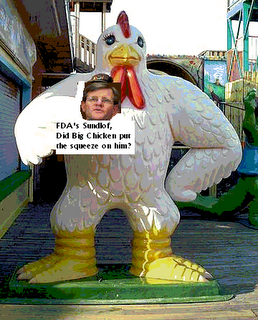
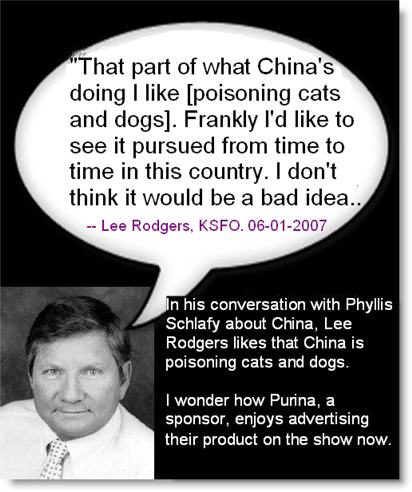

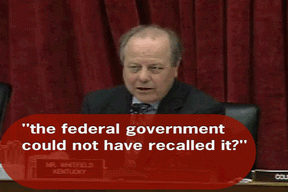
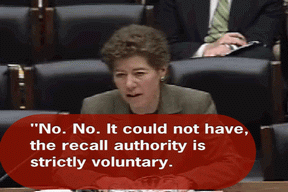
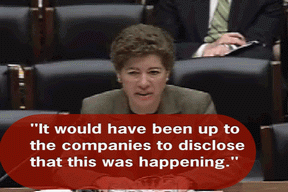

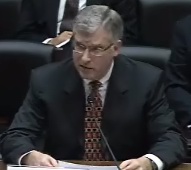
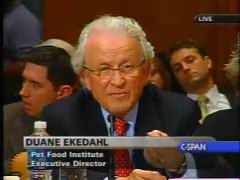
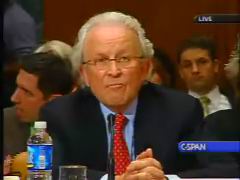
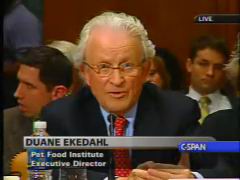




I'd like to see your source on that 3000+ dead pets, the most I've seen on "reputable" websites is ~250, that's a whole order of magnitude off from your numbers. I think the companies should come clean, but I also don't think anyone should be inflating numbers just to get a response.